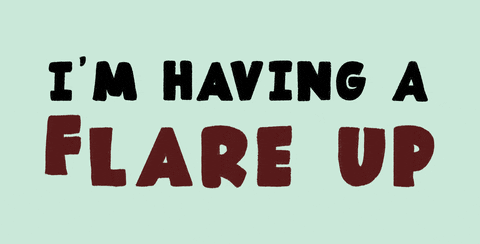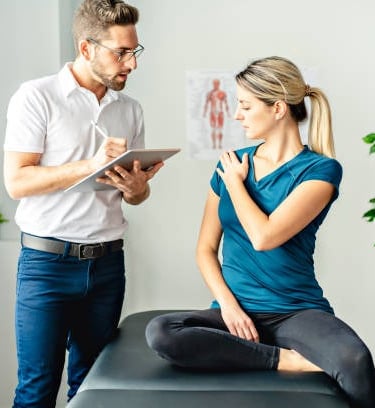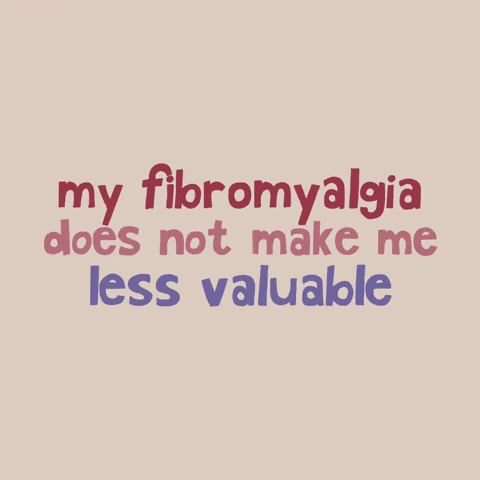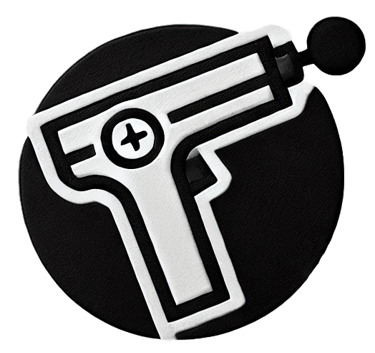Complete Guide to Using Massage Guns for Fibromyalgia: Safety, Techniques & Benefits
When every muscle aches, finding relief can feel impossible. Massage guns have emerged as a potential tool for fibromyalgia management—but using them correctly is crucial. These devices can offer relief when used appropriately, but they require extra consideration for those with fibromyalgia. This comprehensive guide will help you understand the underlying science, refine your techniques, and integrate massage guns safely into your pain management routine.


Table of Contents:
Understanding the Science Behind Massage Guns and Fibromyalgia
How Percussion Therapy Works
Specific Considerations for Fibromyalgia
Safety First: Essential Precautions and In-Depth Guidelines
Getting Started: Practical, Gentle Guidelines for Safe Use
Building and Evolving Your Personal Treatment Protocol
Integrating Massage Guns with Other Therapies
Final Thoughts: Listening to Your Body and Embracing Your Journey


Understanding the Science Behind Massage Guns and Fibromyalgia
Massage guns—also known as percussion therapy devices—work by sending rapid pulses into your muscles. If you have fibromyalgia, you know that your body handles pain in a way that’s very personal and sometimes unpredictable. Here’s a friendly look at how these devices might help:


How Percussion Therapy Works
🔹 Mechanoreceptor Activation: The pulses from the massage gun gently stimulate the receptors in your skin and muscles. This can help “drown out” pain signals, much like turning down a noisy radio.
🔹 Improved Circulation: The vibrations boost blood flow, which may help deliver oxygen and nutrients to tired muscles, easing recovery and reducing inflammation.
🔹 Neurological Modulation: The gentle vibrations might help calm an overactive nervous system, potentially reducing your overall pain sensitivity and even improving your sleep quality. In some cases, this process triggers the release of endorphins—your body’s natural pain relievers.


Specific Considerations for Fibromyalgia
Living with fibromyalgia means your body experiences pain in unique ways. Here are a few thoughts to keep in mind:
🔹 Individual Responses: What works wonders for one person might feel too intense for another. Listen to your body—if gentle pressure feels too much, adjust accordingly.
🔹 Customized Intensity: Start on the lowest settings available. This isn’t a race—it’s all about finding the gentle touch that feels right for you.


Safety First: Essential Precautions and In-Depth Guidelines
When to Avoid Use
🚫 Severe Flare-Ups:
If you're at the peak of pain or experiencing an acute episode, it's best to let your body rest rather than adding stress with a massage gun.🚫 Active Inflammation and Tender Points:
Avoid using the device on areas that are visibly inflamed, red, or particularly tender to prevent further irritation.🚫 Circulatory and Bleeding Issues:
If you have circulatory concerns or are on blood thinners, use caution. High-intensity vibrations might increase the risk of bruising or minor vessel ruptures.🚫 Acute Sharp Pain:
Sharp or sudden pain may indicate an injury or compromised tissue. In such cases, it's wise to skip using the massage gun to avoid aggravating the condition.




When to Stop Immediately
❗ Increased or Prolonged Pain:
If the discomfort intensifies or lingers after a session, stop immediately to avoid further irritation.❗ Numbness or Tingling:
These sensations can signal nerve overstimulation. Cease use to prevent potential nerve issues.❗ Dizziness, Nausea, or Headaches:
Experiencing these symptoms during or after a session is a red flag. Pause the session, rest, and consider seeking medical advice if they persist.❗ Skin Sensitivity or Bruising:
If your skin becomes overly sensitive or shows signs of bruising, stop using the massage gun on that area and give your body time to recover.


General Best Practices
🩺 Consult a Healthcare Professional:
Always check with your doctor or physiotherapist before starting any new treatment, especially if you have pre-existing conditions.🐢 Start Slowly:
Begin with a low intensity and gradually increase only if your body responds well, ensuring you don’t overdo it.👂 Listen to Your Body:
Pay attention to how your body reacts during and after the session. If something feels off, it's best to stop.🔧 Know Your Device:
Familiarize yourself with your massage gun's settings and usage guidelines as provided by the manufacturer.🧘 Complement with Other Self-Care:
Integrate massage gun therapy with other wellness practices like stretching, hydration, and adequate rest.


Getting Started: Practical, Gentle Guidelines for Safe Use
Initial Setup and Environment
👉 Settings and Attachments:
Start Low:
Begin with the lowest speed setting. This gentle introduction allows your muscles to adjust to the percussive movements.Attachment Choice:
Choose the softest attachment (usually foam) to minimize impact while you get accustomed to the device.Short Sessions:
Limit your first sessions to about 30 seconds per muscle group. This brief exposure helps you gauge your body’s reaction without overdoing it.Gradual Increase:
As you become more comfortable, gradually increase the duration and intensity based on how your muscles respond.
👉 Physical Setup:
Cozy Environment:
Find a well-lit, quiet, and comfortable spot where you can relax without distractions.Hydration is Key:
Keep water nearby since even a gentle session might raise your body temperature slightly. Staying hydrated helps your muscles recover.Comfortable Positioning:
Ensure you have a supportive seating or lying arrangement. A mat or a soft surface can help you reach different muscle groups comfortably.


Techniques for Common Tender Points
👉 Technique:
Controlled Movements:
Gently work around the spine, avoiding direct contact with the bones. Instead, focus on the muscles adjacent to the spine.Circular Motions:
Use small, gentle circles to massage the upper back and neck muscles. This method helps in releasing tension without overstimulating sensitive areas.
👉 Duration:
Session Length:
Spend about 60 seconds on each side. Monitor your body’s feedback to adjust the duration if needed.
👉 Support:
Extra Comfort:
Use pillows to support your head and neck during the session. Proper support can enhance comfort and improve the effectiveness of the massage.


👉 Technique:
Focus on Muscles:
Target the broad, flat areas of muscle near your shoulder blades rather than the bony regions. This approach helps in reducing tension safely.
👉 Precautions:
Light Pressure:
Apply very light pressure, especially if you're new to the therapy. This minimizes the risk of triggering sharp or nerve-related pain.Monitor Sensations:
If you experience any unusual sensations like sharp nerve pain, stop immediately and reassess your technique.
👉 Technique:
Targeting Muscles:
Aim for the large muscles adjacent to your spine. Avoid direct contact with the spinal bones to prevent discomfort or injury.
👉 Modifications:
Lying Down Option:
If you’re more comfortable lying down, place a pillow under your knees. This modification can help relieve pressure on your lower back.Adjust Intensity:
Start with a gentler intensity, particularly if you’re prone to lower back discomfort, and only increase as your body adapts.
By following these detailed steps, you'll be better prepared to integrate your massage gun into your wellness routine safely and effectively. Remember: start slowly, listen to your body, and make adjustments based on your personal comfort and response. Enjoy the journey to a more relaxed and revitalized you!


Building and Evolving Your Personal Treatment Protocol
Creating a routine that works for you is a journey. Here are some ideas to help you get started and adjust as you learn what feels best.
Morning Routine: Waking Up Without Stiffness
🌅 Short and Gentle Sessions:
Try spending 30 seconds on each major muscle group to help ease morning stiffness.
🌅 Observation:
Keep a journal of which areas feel better after your session and note any changes.
🌅 Pacing:
Only use the massage gun when you feel ready—never force it if you’re not in the right headspace.
Evening Routine: Promoting Relaxation and Better Sleep
🌙 Evening Focus:
When you’re winding down, use a very gentle approach.
Shorter sessions (around 15-20 seconds per area) can help you relax without overstimulating your body.
🌙 Relaxation Techniques:
Pair your massage with deep breathing exercises or light stretching to enhance the calming effect.
Long-Term Adaptations
🔄 Symptom Diary:
Write down your experiences—what feels good, what doesn’t, and any improvements you notice over time.
🔄 Weather and Stress Factors:
Sometimes, external factors like weather or stress can affect how you feel. Adjust your routine on days when symptoms are more pronounced.
🔄 Scheduled Breaks:
Don’t forget to give yourself rest days. Overusing even a gentle tool can sometimes lead to increased sensitivity.




Integrating Massage Guns with Other Therapies
Remember: The massage gun is just one part of your wellness toolkit. Combining it with other therapies can offer more comprehensive relief.
Combining with Physical Therapy
🤝 Professional Guidance:
Work with a physical therapist experienced in fibromyalgia to safely integrate your massage gun into your routine.🤝 Targeted Exercises:
Use the massage gun as a warm-up before or a cool-down after your physical therapy sessions.
Complementary Self-Care Techniques
🌿 Heat and Cold Therapy:
Alternate between massage sessions and using a heat pack or cold compress to further soothe your muscles.🌿 Mindfulness and Relaxation:
Incorporate practices like meditation, gentle yoga, or progressive muscle relaxation to ease both physical and mental tension.
Monitoring and Adjusting
🔍 Feedback Loop:
Keep a diary of your experiences and review it with your healthcare provider to fine-tune your approach.🔍 Trial and Error:
Remember, finding the right routine may take time—what works one week might need adjusting the next.


Final Thoughts: Listening to Your Body and Embracing Your Journey
Living with fibromyalgia is a constant journey, and learning to listen to your body is the most important lesson of all. While massage guns can be a helpful ally, they’re just one piece of your overall self-care plan. Be patient, be kind to yourself, and remember that it’s okay to adjust your routine as needed.
Key Reminders
💡 Patience is Essential:
Progress might be slow, and that’s completely okay. Every small improvement is a step forward.
💡 Professional Collaboration:
Use your treatment diary as a bridge to communicate with your healthcare provider. Their guidance, combined with your personal experiences, can lead to a more tailored approach.
💡 Empowerment Through Knowledge:
Understanding how your treatment works empowers you to make the best choices for your health. This guide is here to help you feel more confident and informed as you navigate your pain management journey.
By embracing these insights and techniques, you’re not just managing pain—you’re taking control of your well-being. Remember, this journey is deeply personal, and what matters most is that you feel supported and safe every step of the way.


Pulse Therapy Hub
Your guide to massage guns.
Support
ryan@pulsetherapyhub.com
© 2025. All rights reserved.

